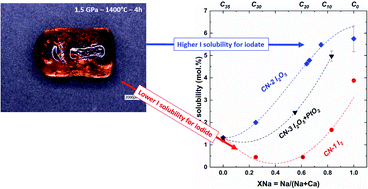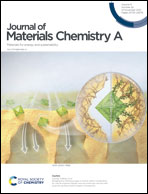Immobilization of 129I in nuclear waste glass matrixes synthesized under high-pressure conditions: an experimental study†
Abstract
There is major environmental interest in finding a sustainable solution to immobilize 129I, a by-product of the nuclear industry. The use of aluminoborosilicate glasses represents a good compromise. However, this solution does not appear adequate for 129I owing to its volatility at high temperature during the vitrification process. In the present work, we use a high-pressure (1.5 GPa) apparatus to synthesize I-rich aluminoborosilicate glasses. We show that the use of high-pressure conditions enhances the I solubility in glasses by several orders of magnitude as compared to 1 bar synthesis, with I solubility up to 5.7 mol%. We observed that I is more solubilized in Na-rich as compared to Ca-rich glass. Investigation of the I speciation using XPS also reveals that I solubility in glasses is much higher as I dissolves as I5+ in comparison to I−. Our work shows that using high-pressure appears to be a reliable solution for dissolving a large quantity of I within the structure of aluminoborosilicate glasses for the conditioning of nuclear waste. We also demonstrate that the oxidized I waste form should be employed to greatly increase I solubility in nuclear waste glasses. Therefore, it represents a potential pathway for solving the immobilization of 129I produced by anthropic nuclear activity.



 Please wait while we load your content...
Please wait while we load your content...